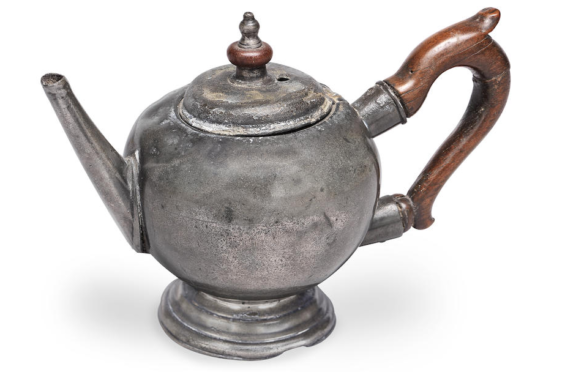Illustrated is a teapot of a type new to me.
It is a c1730 George II teapot made not of silver or silver-plate, but of pewter.
If the material is unusual for a teapot, what lifts it beyond the ordinary is its ‘bullet’ shape. To explain, the bullet-shaped teapot is almost exclusively a preserve of the Scottish provincial silversmith of the 1700s, the name deriving from a shape which echoed that of the spherical musket balls of the period.
They were formed by hammering flat sheets of silver – and they are rare pieces. Tea at this time was exclusive to the upper echelons of society. It was a luxury beyond the reach of most of the citizenry.
Looking back over my records, a c1750 silver bullet-shaped example by George Cooper of Aberdeen sold for £7000 as long ago as 2001. Several fabulous examples are displayed in top museums, including a rare provincial silver bullet teapot by Alexander Johnson at The McManus.
The example shown appeared at Bonham’s Oxford a week or two back. Of typical diminutive size, with a narrow, tapering spout and a hinged, domed lid, the teapot protected its user with the insulation of a fruitwood scroll handle.
It was marked on the base with a crowned ‘X’ and an unidentified initialled maker’s touchmark of ‘T. B.’
Teapots in any base metal are rare – the properties of silver cause heat to be retained, so it was the choice of manufacturers. This example was once part of the celebrated A. T. (Bertie) Isher collection of pewter, which was sold at auction in 1976. Back then it made £620.
This time it took £890 against hopes of £400-600.
Picture: pewter teapot, £890 (Bonham’s, Oxford).










